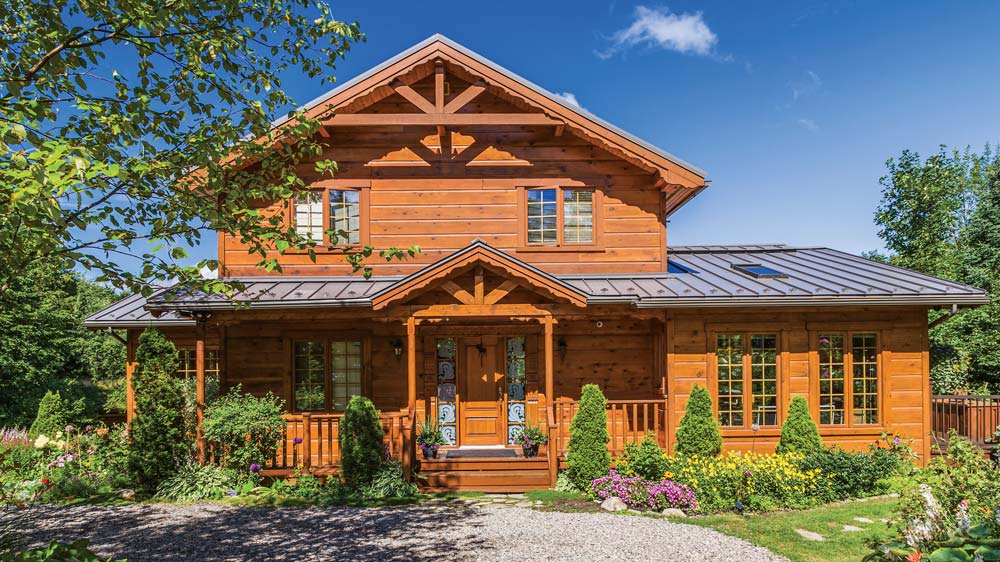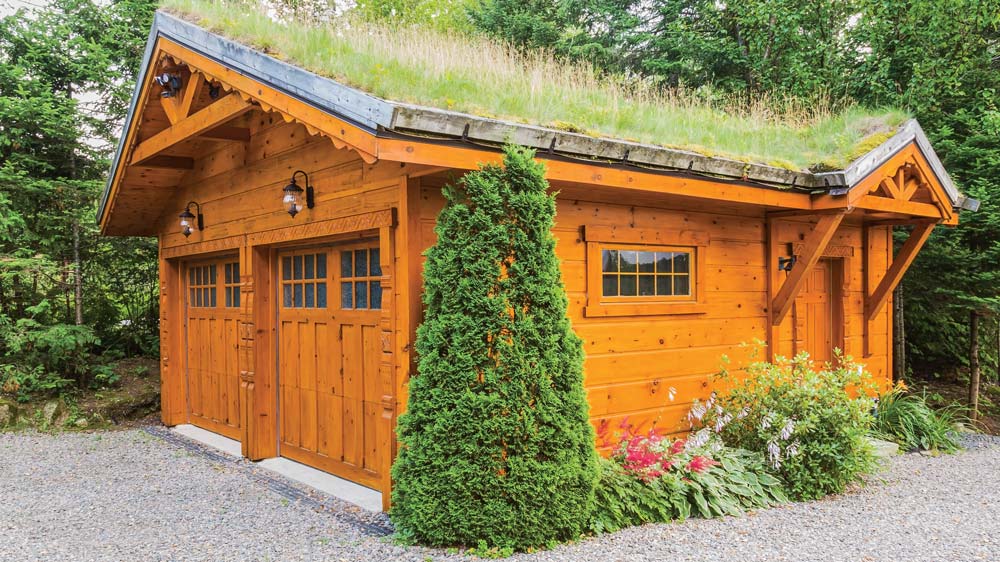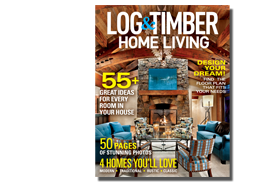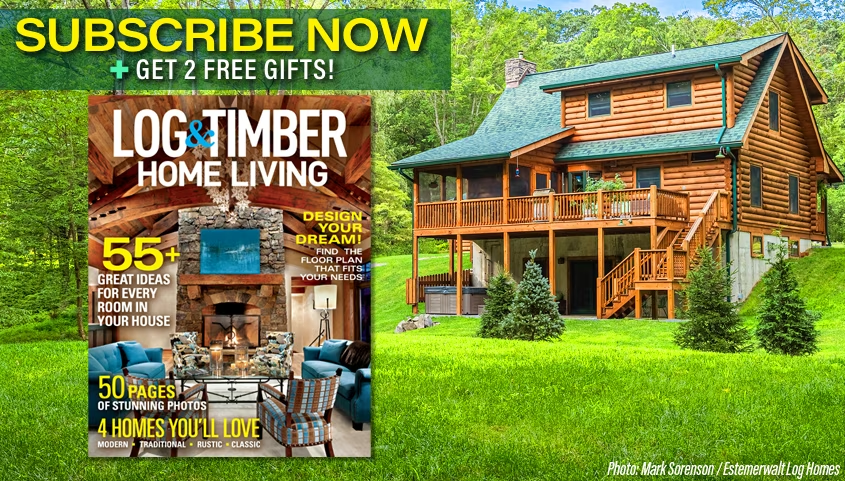
From thick Scandinavian forests to the rugged North American terrain to the alpine villages of the Swiss Alps to the mountains of Japan, log and timber frame structures are building traditions that have stood the test of time and distance. Though they've evolved with modern engineering and construction advancements, the essence remains unchanged - utilizing natural materials in ways that harmonize with the environment.
As global influences continue to shape the log and timber industry, traditional craftsmanship is being reinterpreted through cutting-edge design and innovative technologies. "Good layout and design are universal," says architect Matt Franklin of M.T.N Design. He explains that while international aesthetics don't necessarily present additional challenges from a floor plan perspective, the real determining factor is in the building's exterior. "You want to evoke feelings of the international style you are designing in, but carefully, so as not to take what took thousands of years to develop architecturally and reduce it to a cliché," he says. "You can cross that line very easily, so successfully designing in an international style takes a great deal of thought and effort."
However, Matt notes that using materials like logs and timbers can make it easier to achieve that authenticity. "Many international styles are based on building techniques that developed over a thousand years or more," he says. "Timbers and logs are some of the elements those cultures had to build with, so incorporating them helps in terms of designing a building that is more authentic."
Take, for example, how log and timber structures have long been symbols of durability, warmth and a connection to nature. In regions like Scandinavia, these building methods have deep historical roots, where log cabins were once essential shelters for survival in harsh climates.

Builder: Patriote Home / Photo: Perry Mastrovito
Authenticity is the cornerstone of international design, ensuring that structures "age gracefully," according to Matt. "First, start with a good design," he advises. "Make sure massing, rooflines, windows, scale, proportion and architectural details are correct. Second, use authentic materials such as stone, stucco, timbers and logs, slate on the roof, if appropriate, and quality windows. Most international styles use those in the material palette, so you will want to do the same. Those materials are timeless."
Sustainability is another driving force that transcends borders. Around the world and across time, log and timber frame structures have prioritized healthy living environments and the use of organic building materials to enhance indoor-air quality and create a warm, stress-reducing atmosphere.
Today's homes and commercial buildings carry on that tradition thoughtfully, integrating international design principles with contemporary practices to remain timeless while meeting the demands of the modern world. As technology pushes the boundaries of what's possible, the essence of log and timber architecture with its connection to nature, craftsmanship and heritage remains as relevant and inspiring as ever. Looking for proof? The following plans celebrate international styles to brilliant effect.
The Lyon by Riverbend Timber Framing
Courtesy of Riverbend Timber Framing
Square Footage: 3,193
Bedrooms: 3
Bathrooms: 2 full, 1 half
The Lyon floor plan exemplifies European timber frame elegance. "This home is designed in the French country style," explains architect Matt Franklin of M.T.N Design (an extension of Riverbend Timber Framing and PrecisionCraft Log & Timber Homes). "It is intended to evoke feelings of the French countryside scattered with solid stone homes built with timber framing. The architectural details are classically French in nature, from full use of stone on the exterior, to the metal balcony railing, to the curved timbers and down to the shutters." Other hallmarks, like a grand foyer, the dual-sided fireplaces and a soaring two-story great room, reflect a global appreciation for airy spaces, indoor-outdoor living and lasting craftsmanship.
Kotonaru Kyūden by Timberpeg
Courtesy of Timberpeg
Square Footage: 2,968
Bedrooms: 2
Bathrooms: 3 full
Originally crafted for a property in the North Carolina mountains, Kotonaru Kyūden, which translates to "Palace of the Different One," is a striking timber frame design inspired by Japanese architecture and environmental principles. Designed by architect Kenneth Wertheim, the home embodies a seamless fusion of tradition and innovation. At the heart of the design is a voluminous great room. This soaring, two-story space serves as a tatami room: a minimalist, open gathering area at the core of the home. Sliding doors lead from the great room to a tranquil sanctuary and a pergola-topped meditation deck, further reinforcing the home's ambiance. Thoughtful architectural details, like flared roof edges and bamboo-style lattice on the gable ends and railings, pay homage to Japanese craftsmanship.
Louisburg I by True North Log & Timber Homes
Courtesy of True North Log & Timber Homes
Square Footage: 1,825
Bedrooms: 3
Bathrooms: 1 full, 1 half
Whimsical details like the bell curve of the rooflines give this otherwise traditional cozy cabin a French-Canadian flair. A full wrap-around porch boasts cross-cultural appeal and provides entry and exit on three of the home's four sides. On the main floor, a functional kitchen with island seating opens directly to the dining area. On the other side of the dividing staircase, the living area stretches from the front porch to the back and is anchored by a snug fireplace. Upstairs, three bedrooms share the main bathroom; however this could easily be modified to include an en suite, meaning this plan can flex from weekend retreat to full-time domicile.
Dutch I by MossCreek
Courtesy of MossCreek
Square Footage: 2,036
Bedrooms: 3
Bathrooms: 2 full, 1 half
The Dutch I looks for inspiration in the same place that early settlers on the East Coast did: the agrarian structures of Europe. However, this modern interpretation adds an air of Americana with a simple coat of red paint on the exterior. Whether built in the heartland or in the heart of the 'burbs, this plan's classical style makes it a fit for a variety of locales. With the main floor dedicated to wide-open living and cooking spaces, it plays the perfect host for entertaining. Upstairs, three bedrooms and two bathrooms offer peace, quiet and privacy.























